| Karel Doing | |||
Inside Out This program explores the relation between cinema, architecture and music. If cinema is the art of imagination, architecture is the art of reality, music can be a bridge that brings both worlds together. The architect who is the starting point of this program: Constant Nieuwenhuis, is actually not an architect but a visual artist. He is probably most well known for his role in the COBRA movement, a European avant-garde movement active from 1948 to 1951, who’s members were taking the point of view of a child, an untamed and unspoilt view resulting in wild and colourful paintings. After COBRA was dissolved, Constant focuses on questions about how people live and how cities should be build. He starts designing an imaginary city; New Babylon. With this project he envisions a "world wide city for the future" where land is owned collectively, work is fully automated and the need to work replaced with a nomadic life of creative play. New Babylon is inhabited by homo ludens, who, freed from labor, will not have to make art, for he can be creative in the daily practice of his life. Constant’s architecture is free from restrictions like budget, commercial interest and political influence. His architectural models, drawings and paintings are autonomous and revolutionary; unlike the architecture we experience everyday. |
|
New Babylon de Constant
Seyferth/Nieuwenhuis |
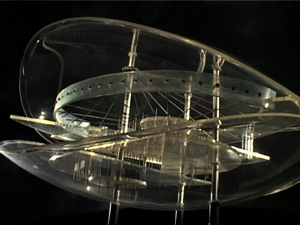 |
Jeux des reflets et de la vitesse – Henri Chomette 16mm b&w silent 6 minutes 1925 In Jeux de reflets et de la vitesse from 1925 Henri Chomette starts with geometric forms in motion, then an almost seamless transition takes us into the Paris metro, traveling through tunnels and up through town, suddenly changing perspective to the Seine and then back again into the metro train. The film gives a fast paced modernist view of Paris at that time, combining it with an imaginary space still to be realized. Henri Chomette coined the term ‘Cinema Pur’ to define a cinema that focuses on the pure elements of film like form, light, motion, visual composition, and rhythm. |
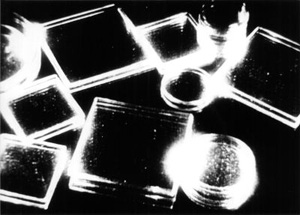 |
|
 |
Musical stairs Guy Sherwin 16mm b&w 9 minutes 1975 Filmmaker Guy Sherwin made a series of films in which he printed images on the optical soundtrack. Optical sound is a regular method to register sound on a filmstrip, and Sherwin uses this technique to make soundtracks that have a direct relation to the image. In Musical stairs he departs from the image of a long flight of stairs. He uses the effects of perspective to change pitch, and the leaves that have fallen on the stairs for harmonic distortion. Here architecture produces music, a reverse of the famous quote from Goethe “Architecture is as frozen music.” |
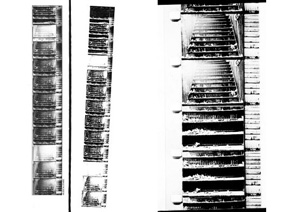 |
Between the Lights Wiertz/Verbeek 16mm colour 9 minutes 1975 A film made with hand coloured black and white photographs. We see a sensual woman in an imaginary space. The filmmakers play with perspective, still-photography versus animated movement, and black & white versus colour. They continually cross the thin line between reality and imagination. Even the view through the windows is a landscape introduced by the artists. The space is organized in a geometric way but at the same time it seems to breath and move, connecting it with the sensuality of the woman. The film echoes the metaphysical paintings by the Italian painter De Chirico, with a similar enigmatic, brooding mood. |
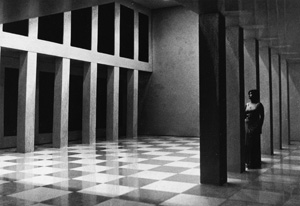 |
Crescendo
Andras Hamelberg |
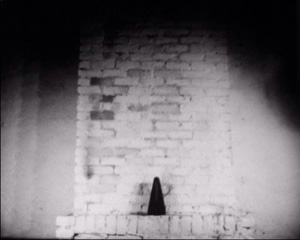 |
Grand Central – Jeffrey Scher 16mm b&w 15 minutes 1999 In this film Jeff Scher shows us the main concourse of Manhatten’s train station. Build in the heyday of American long-distance passenger rail travel, Grand Central Terminal is the largest train station in the world by number of platforms. After the great east window was restored in 1998 to its original splendour, light flooded into the main concourse once more, an enormous space crossed by travelers in every direction. Jeff Scher shot with a 16mm camera and a number of filters, his favorite being a piece of scratched plastic, picked up on 42nd street. The refraction caused by this filter produces magical images, as if we are looking through a kaleidoscope. The utilitarian hall changes into a lyrical space. |
 |